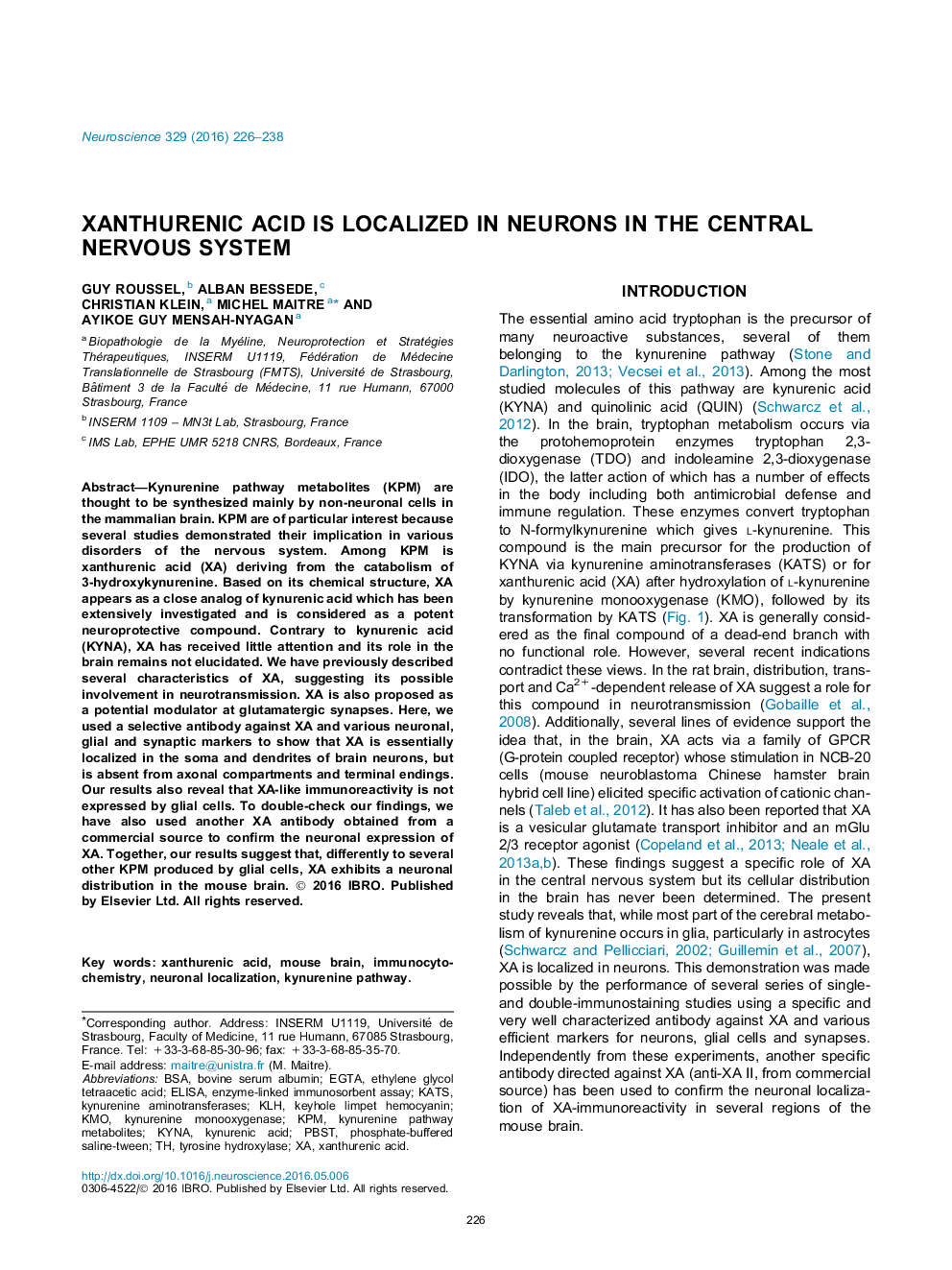| Article ID | Journal | Published Year | Pages | File Type |
|---|---|---|---|---|
| 6271028 | Neuroscience | 2016 | 13 Pages |
â¢Xanthurenic acid possesses many properties of a brain neurotransmitter.â¢Immunocytochemical evidence localize xanthurenic acid in neurons.â¢Xanthurenic acid is present in neuronal soma and dendrites but absent from axons.â¢A somato-dendritic release is postulated for xanthurenic acid.
Kynurenine pathway metabolites (KPM) are thought to be synthesized mainly by non-neuronal cells in the mammalian brain. KPM are of particular interest because several studies demonstrated their implication in various disorders of the nervous system. Among KPM is xanthurenic acid (XA) deriving from the catabolism of 3-hydroxykynurenine. Based on its chemical structure, XA appears as a close analog of kynurenic acid which has been extensively investigated and is considered as a potent neuroprotective compound. Contrary to kynurenic acid (KYNA), XA has received little attention and its role in the brain remains not elucidated. We have previously described several characteristics of XA, suggesting its possible involvement in neurotransmission. XA is also proposed as a potential modulator at glutamatergic synapses. Here, we used a selective antibody against XA and various neuronal, glial and synaptic markers to show that XA is essentially localized in the soma and dendrites of brain neurons, but is absent from axonal compartments and terminal endings. Our results also reveal that XA-like immunoreactivity is not expressed by glial cells. To double-check our findings, we have also used another XA antibody obtained from a commercial source to confirm the neuronal expression of XA. Together, our results suggest that, differently to several other KPM produced by glial cells, XA exhibits a neuronal distribution in the mouse brain.
Graphical abstractDownload high-res image (207KB)Download full-size image
